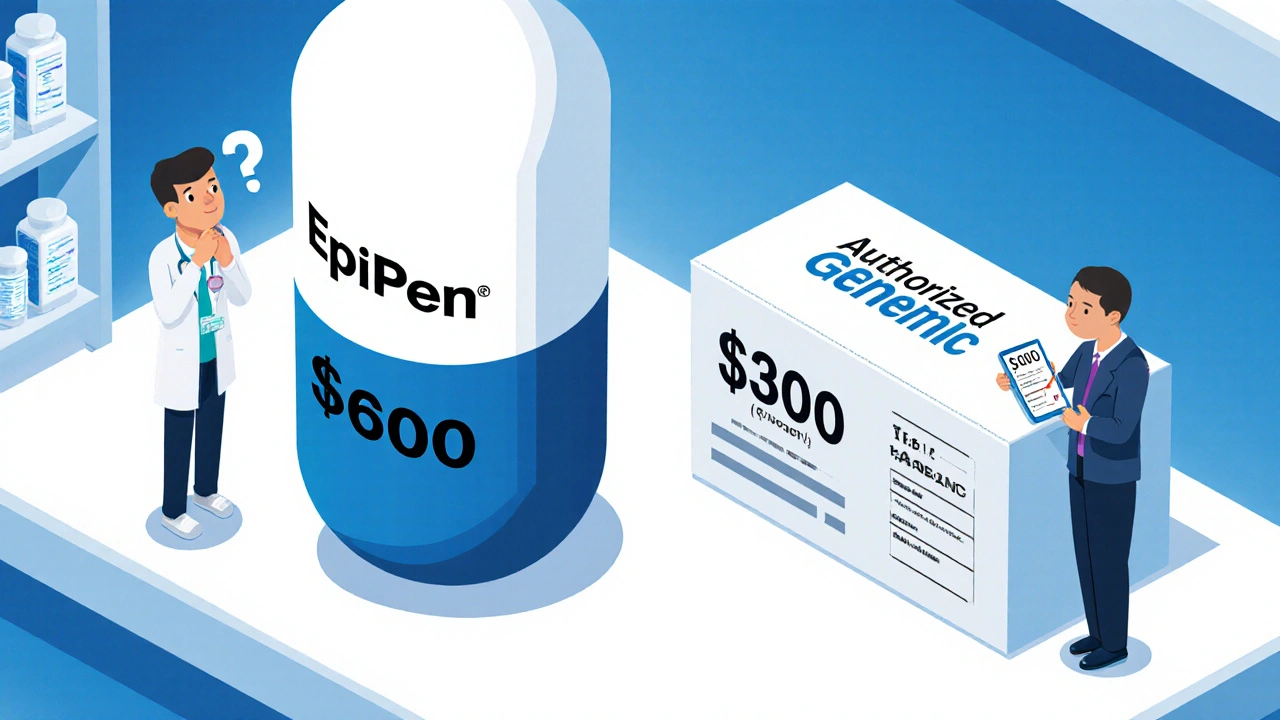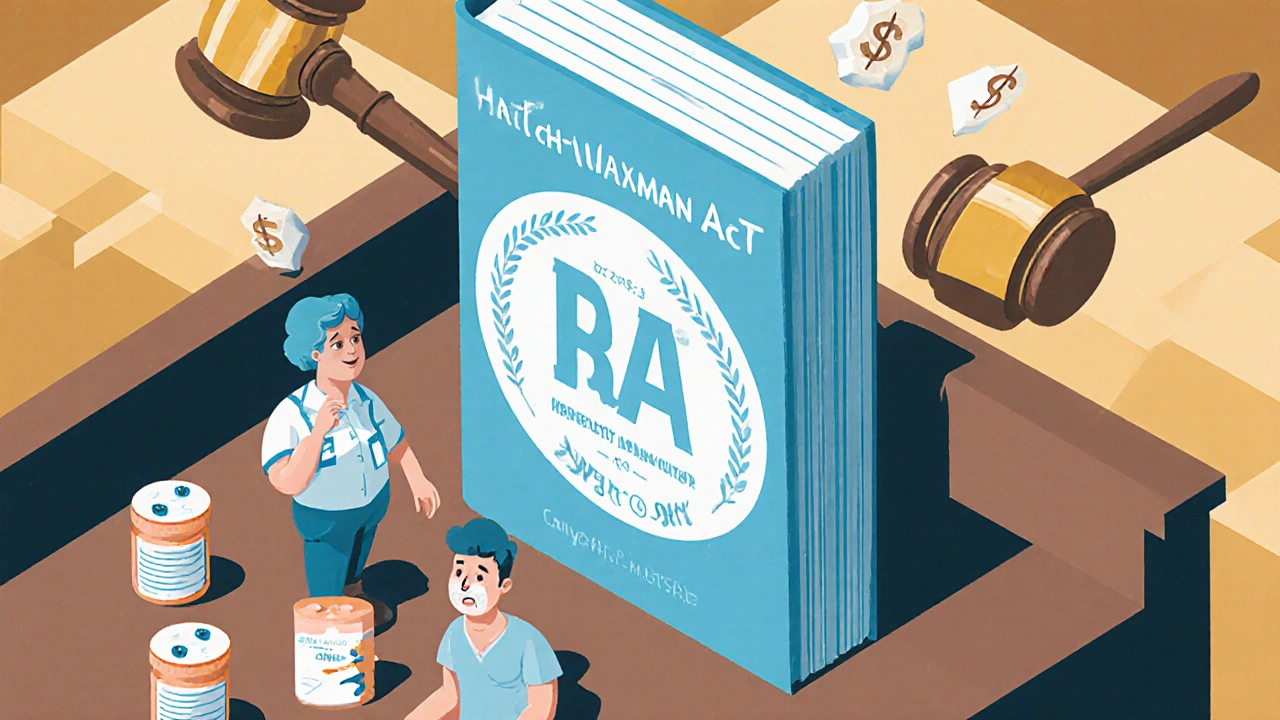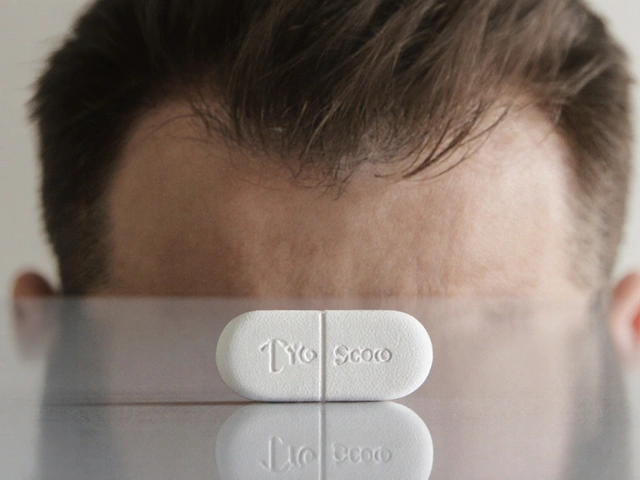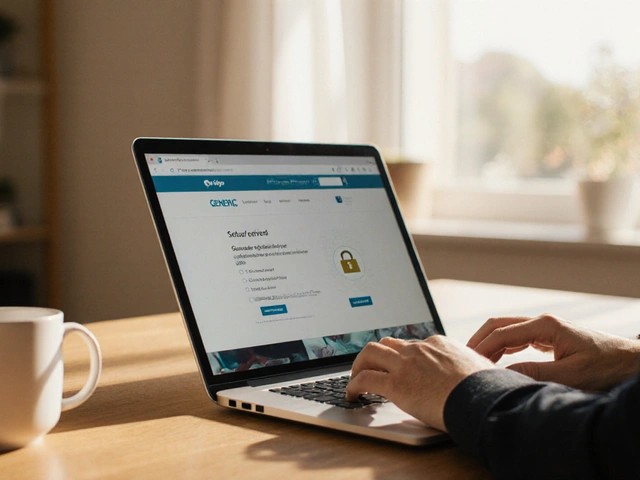Why Most Drugs Don't Have Authorized Generics - And What It Means for Your Prescription Costs

Not every drug you take has a cheap generic version - and even when it does, it might not be the kind you think. There’s a hidden layer in the generic drug market called authorized generics, and they’re not available for most medications. If you’ve ever been confused why your pharmacy switched your ‘generic’ pill to a different-looking box with the same name, you’ve seen an authorized generic in action. But here’s the catch: only a small fraction of brand-name drugs ever get one. And that’s by design.
What Exactly Is an Authorized Generic?
An authorized generic is the exact same drug as the brand-name version - same active ingredient, same factory, same packaging, same quality control. The only difference? It’s sold without the brand name on the label, at a lower price. Think of it like a car manufacturer selling the same model under a different badge, but with no extra features or cost savings from production.
Unlike traditional generics, which are made by other companies after the brand’s patent expires and must prove they work the same way (a process that can take years), authorized generics skip all that. They’re made by the original brand company itself, using its own New Drug Application (NDA) approved by the FDA. That means they can hit the market the same day the brand’s patent expires - or even before.
For example, when Mylan launched its authorized generic version of the EpiPen in 2016, it was still under patent. The brand version cost over $600. The authorized generic? Around $300. Same device. Same epinephrine. Same life-saving function. Just a different label and a lower price tag.
Why Don’t All Drugs Have Authorized Generics?
Because authorized generics aren’t about helping patients - they’re about controlling competition.
Brand-name drug companies decide whether to launch an authorized generic based on one thing: profit. If they think a traditional generic competitor will come in and steal market share, they might release their own version first to undercut them. It’s a preemptive strike. In 2019, the FDA listed 1,215 authorized generics. Sounds like a lot? It’s less than 5% of all prescription drugs on the market.
Here’s the pattern: if a drug brings in more than $500 million a year in sales, there’s a 70% chance it has an authorized generic. If it makes under $100 million? Only 22% of those drugs ever get one. The math is simple: big money = big incentive to protect it. Small money = not worth the effort.
That’s why you’ll find authorized generics for drugs like Lyrica, Protonix, and EpiPen - blockbuster medications with high profit margins. But for thousands of other drugs - antibiotics, blood pressure meds, thyroid pills - you won’t see one. Not because they can’t be made as generics. But because the brand company doesn’t see a reason to.
How Authorized Generics Change the Market
When an authorized generic enters the market, it doesn’t just lower prices - it changes the entire competitive landscape.
Under the Hatch-Waxman Act, the first company to file for a traditional generic gets 180 days of exclusive rights to sell it. That’s a huge financial prize - sometimes hundreds of millions in profits. But if the brand company launches its own authorized generic during that period, it shatters that exclusivity. The FTC found that when this happens, the first generic’s revenue drops by 40% to 52% during those 180 days.
And here’s the twist: that drop doesn’t just hurt the generic company. It hurts patients too. Why? Because the brand company doesn’t lower prices to help you. They lower them to stop others from undercutting them. Once the 180-day window ends, and the authorized generic is still on the shelf, traditional generics often never come. Why invest millions to challenge a patent if the brand company already owns the low-price version?
In one study, researchers found that for a drug with $130 million in annual sales, a generic manufacturer would need a 10% chance of winning a patent lawsuit to justify the cost - if an authorized generic was coming. Without one? Just a 4% chance. The authorized generic isn’t just a cheaper option. It’s a deterrent.

The Confusion at the Pharmacy Counter
Patients don’t always know they’re getting an authorized generic. Pharmacists do - but even they get tripped up.
A 2015 survey of Walgreens pharmacy staff found that 27% more prescription errors occurred when a drug had both a brand version and an authorized generic available. Why? Because the pills look identical. The label says “epinephrine auto-injector.” But one is branded. One is authorized generic. One costs $600. One costs $300. And if the pharmacist doesn’t check the manufacturer code, the wrong one gets dispensed - and the patient’s insurance might not cover it.
Doctors are confused too. A 2018 survey of 1,200 physicians found that 63% said authorized generics made therapeutic substitution harder. “I used to assume ‘generic’ meant cheaper and independent,” one doctor said. “Now I have to ask: Is this the real generic? Or is it just the brand in disguise?”
Patients notice the packaging changes. A Medicare Part D survey in 2019 showed that 72% of respondents were confused when their “generic” suddenly came in a different box - sometimes with a different manufacturer name. They thought they were getting a cheaper alternative. Instead, they got the same drug, just with a different label.
Who Benefits? Who Loses?
It’s easy to assume authorized generics are a win for consumers. And sometimes, they are.
When Mylan launched its EpiPen authorized generic, patients saved an average of $18.75 per prescription during the 180-day exclusivity window. Pfizer’s Lyrica authorized generic dropped prices by 12% within three months. That’s real money for people paying out-of-pocket.
But here’s the flip side: these savings are temporary. Once the authorized generic settles in, and traditional generics are scared off by the brand’s dominance, prices often stabilize - or even rise again. The FTC found that in 60% of cases where an authorized generic was introduced, the overall price of the drug didn’t drop further after the 180-day period ended.
Meanwhile, traditional generic manufacturers - the ones who invest millions in legal battles and clinical testing - get sidelined. The system was designed to reward innovation in generics. But authorized generics let brand companies play both sides: they get to keep their patent profits while also capturing the generic market.
Legal experts like Aaron Kesselheim from Harvard call this a “strategic loophole.” The Hatch-Waxman Act was meant to speed up generic access. Instead, it gave brand companies a tool to delay it.

What’s Changing - And What Isn’t
The FDA now updates its list of authorized generics quarterly instead of annually, a small improvement after years of criticism. Congress has tried to ban them during the 180-day exclusivity period. Bills like the Preserve Access to Affordable Generics Act have been reintroduced multiple times with bipartisan support. But they keep failing.
Why? Because the pharmaceutical industry has too much influence. The biggest drugmakers - Pfizer, AbbVie, Mylan - all use authorized generics as part of their standard playbook. In 2021, 89% of companies with drugs earning over $1 billion a year used them. Only 22% of smaller companies did. It’s not a policy issue. It’s a profit issue.
And while biosimilars (generic versions of biologic drugs) are growing, they’re not replacing authorized generics. They’re just another layer in the same complex system.
What You Can Do
If you’re paying for a brand-name drug, ask your pharmacist: “Is there an authorized generic for this?”
It’s not always listed on the label. But if one exists, it’s usually cheaper than the brand - and sometimes cheaper than the traditional generic. You might need to ask for it by name. Don’t assume the cheapest option is the best one.
Also, check your insurance formulary. Some plans treat authorized generics differently than traditional generics. You might pay less if you choose the authorized version - even if it’s made by the brand company.
And if you’re frustrated by the lack of true generic options, speak up. Contact your state’s insurance commissioner. Ask your lawmaker why authorized generics aren’t regulated like other generics. The system isn’t broken - it’s working exactly as the manufacturers designed it.
But you don’t have to accept it as inevitable.
Are authorized generics the same as regular generics?
No. Regular generics are made by other companies after the brand’s patent expires and must prove they work the same way. Authorized generics are made by the original brand company using the same formula, factory, and equipment - just sold under a different label. They’re identical to the brand drug, not just similar.
Why don’t all drugs have authorized generics?
Because brand manufacturers only launch them when it helps their profits. They’re expensive to set up strategically - and only make sense for high-revenue drugs. Most medications, especially cheaper ones, don’t generate enough profit to justify the legal and marketing effort.
Do authorized generics lower drug prices long-term?
Sometimes - but not always. They often cause a short-term price drop during the first 180 days after patent expiration. But because they scare off traditional generic competitors, prices often stop falling after that. In many cases, the authorized generic becomes the only low-cost option - and since it’s owned by the brand company, there’s little pressure to lower prices further.
Can I ask my pharmacist for an authorized generic?
Yes. Ask: “Is there an authorized generic version of this drug?” The pharmacist can check the manufacturer code or database to find out. It’s not always labeled clearly, so you may need to request it by name. Some insurance plans cover it at a lower cost than the brand or even the traditional generic.
Why do authorized generics cause confusion at pharmacies?
Because they look and work exactly like the brand-name drug. The only difference is the label and manufacturer name. Pharmacists can accidentally dispense the wrong version, especially if they’re not trained to spot the subtle differences. Patients also get confused when their “generic” suddenly changes packaging - not realizing it’s still the same drug, just sold under a different name by the same company.






Comments (8)
Erika Hunt
22 Nov 2025
Okay, so let me just say this-I’ve been on a dozen different meds over the last five years, and I never realized that the ‘generic’ I got last month was literally the same pill as the brand, just with a different label. I mean, I thought generics were made by other companies, right? Like, independent labs? Turns out, no. It’s the same factory, same machinery, same chemists, just repackaged. And the worst part? I paid $80 for the brand, then $45 for the ‘generic,’ and now I find out it’s the same thing? I feel like I was sold a lie. And honestly, why does the FDA even let this happen? It’s not transparency-it’s manipulation. I’m not mad at the pharmacist, I’m mad at the system. And now I’m going to start asking for the authorized generic by name every time. No more guessing games. 😒
Srikanth BH
23 Nov 2025
Hey, I just wanted to say thank you for writing this. I’m from India, and we don’t have this exact system here-but we do have similar issues with branded generics and price manipulation. Your explanation made me realize how cleverly the system is designed to keep people confused. I hope more people in the US start asking questions like you did. Small actions, like asking your pharmacist for the authorized version, can actually make a difference. Keep speaking up! 💪
Jennifer Griffith
24 Nov 2025
so like… authorized generics are just the brand but cheaper?? like why do they even bother making a separate label?? this is so dumb. also i got my epi pen thingy for 300 and thought i was saving money but now i feel scammed??
Roscoe Howard
26 Nov 2025
It is an incontrovertible fact that the pharmaceutical industry, in its current regulatory environment, has institutionalized a mechanism of market distortion that fundamentally undermines the principles of free-market competition. The authorized generic, far from being a consumer benefit, is a strategic instrument of monopolistic preservation, leveraging the Hatch-Waxman Act’s intended incentives to preempt legitimate generic entrants. This is not merely a loophole-it is a deliberate, legally sanctioned oligopolistic maneuver. The FTC’s findings are not incidental; they are diagnostic. And yet, Congress remains paralyzed by lobbying expenditures exceeding $2.8 billion annually. This is not a failure of policy-it is a triumph of capital over public health.
Kimberley Chronicle
27 Nov 2025
Interesting how the authorized generic functions as a ‘market-clearing’ mechanism-essentially a preemptive strike against the 180-day exclusivity window. From a game theory perspective, it’s a classic first-mover advantage tactic, where the incumbent leverages its regulatory and production infrastructure to capture the low-price segment before competitors can even enter. The irony? The very law designed to accelerate generic access (Hatch-Waxman) is being weaponized to suppress it. What’s missing from the discourse is the role of PBMs here-they’re the hidden middlemen who often incentivize the brand version due to rebates. The authorized generic might be cheaper for the patient, but if the PBM gets a higher rebate from the brand, they’ll push that instead. We need transparency in rebate structures, not just labeling.
Shirou Spade
27 Nov 2025
There’s a deeper philosophical question here: if a drug is chemically identical, and produced in the same facility, under the same quality controls, then why does the label matter at all? The brand is a social construct-a psychological anchor that convinces people that the ‘blue pill’ is better than the ‘white pill,’ even when they’re twins. The authorized generic exposes the emptiness of branding in medicine. We treat drugs like luxury goods, when they’re basic human necessities. The real scandal isn’t that companies make authorized generics-it’s that we let them charge $600 for a life-saving device simply because it has a logo on it. Maybe we need to outlaw brand names on essential medicines altogether.
Lisa Odence
28 Nov 2025
Okay, I just read this whole thing and I’m not even mad-I’m impressed. 😳 Like, the fact that the same exact pill can cost 2x depending on the label? That’s wild. But also… I just called my pharmacy and asked for the authorized generic for my blood pressure med, and they had no idea what I was talking about. So I had to explain it to them. 🤦♀️ And guess what? It was $12 cheaper. I’m telling everyone. Also, if you’re on Medicare Part D, check your formulary-sometimes the authorized generic is tier 1. Who knew? 🤫💊 #PharmaIsAScam
Patricia McElhinney
29 Nov 2025
It's appalling that the FDA permits this practice at all. This isn't 'market competition'-it's collusion disguised as consumer relief. The brand manufacturers are using the system to eliminate rivals before they even begin. And patients? They're being misled into thinking they're getting a 'generic' when they're actually purchasing the brand's own product. This is fraud by regulatory loophole. The fact that Congress hasn't shut this down after decades of evidence is a moral failure. I've written to my representative. I've filed complaints with the FTC. And I will continue to do so until this practice is banned outright. There is no justification for allowing a company to monopolize both the brand and the generic market simultaneously. This is not capitalism-it's corporate feudalism.